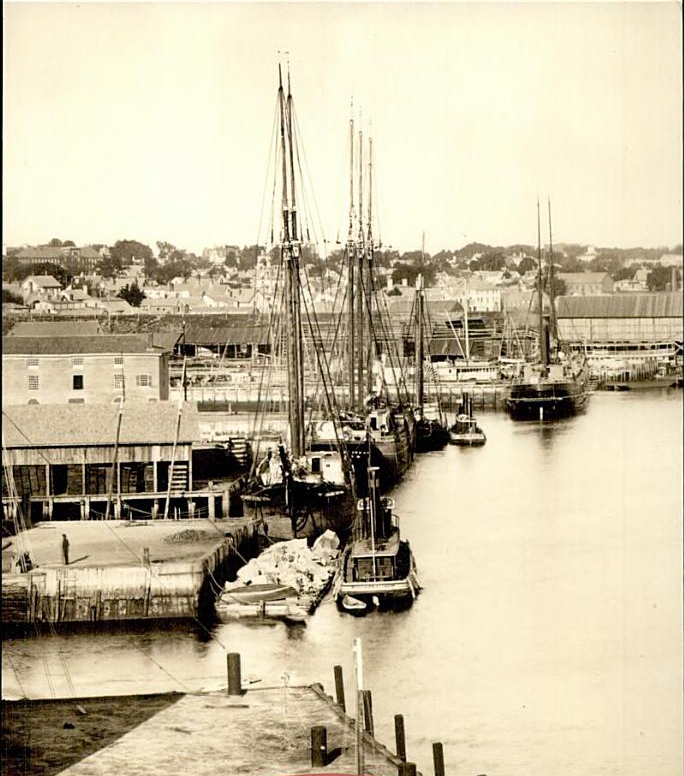
The Importance of Wharves:
Contemporary History has once again underlined a forgotten truth that America’s ports are vital links not only to the rest of the world but to our national economic health. Back in the 18th to 19th century, the wharves as unattractive they may have been, and rather dangerous to visit as swinging cranes and unstable goods could cause great harm to the occasional visitor; nevertheless, they were indispensable.

The Reasons why they were so important:
- This was the point of contact for exotic goods from all over the world.
- This was the point of contact for exotic people coming from all over the world. It was these wharves that immigrants first encountered when coming to America.
- This was where the hum of commerce grew hottest and drew a flurry of human activity.
- Before the implementation of income taxes in the early twentieth century, this was largely the only means of income for state and national governments in the United States. Each custom house was not only the main revenue source but also temporary monetary vaults which was why Andrew Jackson sought noncombustible buildings to house much of the national treasury.
- It was the wharves that put the Port into Newburyport.
- It was the main egress for international transportation to places unknown and a lifeline to major centers in Europe and the Far East.
In fact, so much history about Newburyport has to do with prominent characters who owned some part of the warehouses or in some cases, the wharves themselves, that shaped our history.
So, to be thorough, here are a list the wharves in order from West to East. Some of the wharves listed are simply the same wharf but with a new owner with a new name reflecting different times in ancient Newburyport.
Currier Wharf (1872)
Jackman Wharf (1872)
Pillsbury Wharf (1851)
Richard’s Wharf (1851), Browns Manufacturing Co. Wharf (1872) (Towle Building)
Caldwell’s Wharf (1851, 1872)
Essex Mills Wharf (1851), Emerson’s Wharf (1872) (Waters Edge Condominiums)
Williams Wharf (1851), N.V. Varina Wharf (1872), Tournament Wharf (Michael’s Harborside)
Patches Wharf (1851, 1872)
Horton’s Wharf (1851), A. Currier Wharf (1872)
Brown’s Wharf (1851, 1872) (Black Cow Restaurant)
Mercantile Wharf (1872)
Central Wharf (1851, 1872)
Hales Wharf (1851)
Ferry Wharf (1851)
Granger’s Wharf (1851)
Garrison’s Wharf (1851)
Coal & Weed Wharf (1851), Custom House Wharf (1872)
Commercial Wharf (1851, 1872)
Cushing’s Wharf (1851, 1872)
Stanwood Wharf (1851)
Lower Bartlett Wharf (1780), Kimball’s Planning Mill Wharf (1840)
Bailey’s Wharf (1851, 1872)
De Fords Wharf (1851)
Haskell’s Wharf (1851)
Bartlett’s Wharf (1851, 1872)
Johnson’s Wharf (1851), W.S. Coffin Wharf (1872)
Coombs Wharf (1851, 1872) (Privateer’s Wharf) (Roughly where American Yacht Club is located)
Company Wharf (1851), Huses Wharf (1872)
Many are filled in and many of us have walked unawares over the buried remains. The most east is only visible at low tide.

